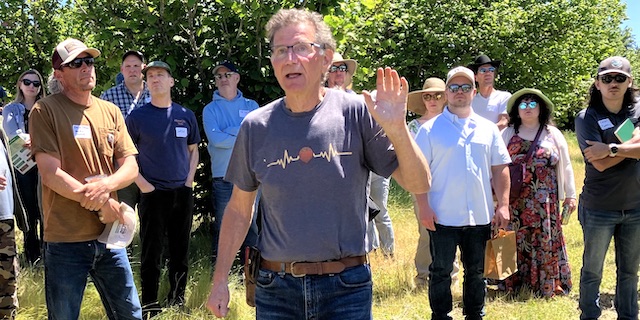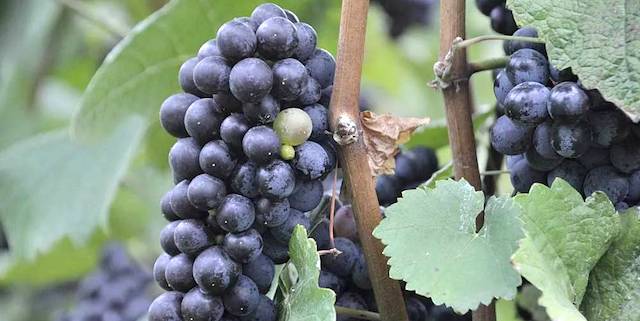Victor’s Lavender: Expert supplies greenhouses worldwide
Published 7:00 am Thursday, August 11, 2022

- Victor Gonzalez with his lavender crop on his small farm near Sequim, Wash. He propagates 500,000 seedlings of 100 lavender varieties to supply the growing demand from greenhouses worldwide.
SEQUIM, Wash. — Victor Gonzalez has no trade secrets about growing lavender, his life’s mission.
Trending
Nicknamed the “Grandfather of Lavender,” Gonzalez raises lavender near Sequim, Wash., on the Olympic Peninsula in an unusual microclimate.
A wholesale producer, he and his staff propagate 500,000 seedlings of 100 lavender varieties to supply an increasing demand from greenhouses worldwide.
“I love to grow lavender and help others so they won’t have the failures I had in the beginning,” said Gonzalez, 52, a U.S. Agency for International Development volunteer with nearly three decades of lavender expertise.
Trending
“That’s who I am,” he said. “Having a giving attitude has taken me to Latin America, North Africa, and the Middle East to offer farmers advice. It’s working for me. I will keep it that way.”
He teaches classes about raising the fragrant shrub, has contributed to a book, does consulting, and launched a website, victorslavender.com with instructional DVDs about propagating and planting the fragrant shrub.
For centuries worldwide, lavender has been prized for cooking, floral arrangements, its calming aroma, and as an ingredient in health and beauty products. Studies suggest lavender benefits those with depression, insomnia and anxiety, and that its oil has antiseptic and anti-inflammatory properties.
A hardy, pest-resistant perennial shrub, lavender requires minimal watering and fertilization. It thrives in full sun and well-drained soil.
To share his love of lavender, Gonzalez’s farm includes greenhouses, fields with a U-cut section, and a retail store with health and beauty products made by his wife, Maribel.
Gonzalez cultivates two acres and leases two acres. He also oversees four greenhouses on his farm and leases another three around town.
“The greenhouses are the heart of my farm,” he said. “We’re known in the industry for offering quality plants and customer service — the whole package.”
Gonzalez learned to grow lavender in the mid-1990s, when the owner of a farm where he worked near Sequim wanted to try a new crop and asked him to raise lavender.
Having never grown it, he followed advice in a book and watched the plants die. In hindsight, he applied too much water and fertilizer.
“I decided to raise it based on my knowledge of soil types and growing crops in my family’s farm in Mexico,” he said.
Finally successful, from 1996 to 2004 he managed the nursery at the farm, Sequim Valley Lavender.
Other farmers in the area were also beginning to grow lavender, realizing the climate was similar to southern France, where it thrives. In 1996, they started the annual Sequim Lavender Festival in mid-July and dubbed the town “The Lavender Capital of North America.”
The name was fitting because within a 15-minute drive of Sequim in all directions more than 30 lavender farms are thriving. About 15 are agri-tourism farms.
Gonzalez explained the Sequim area microclimate is called the Blue Hole and is visible from satellite photos. The area has a Mediterranean climate with low rainfall of about 23 inches annually and proximity to water, the Strait of Juan de Fuca.
In 2004, when Sequim Valley Lavender’s out-of-state owner closed production to focus on other business interests, Gonzalez started his own farm.
He renovated a dairy barn and opened business in 2005 with help from his wife and their two sons. He still has a staff of four full-time, year-round employees, including himself. Seasonally, he hires about 10 during the fall to propagate plants and spring to deliver.
Gonzalez ships his lavender through May. During summer, the farm is open to the public, culminating in the annual Sequim Lavender Festival and Victor’s Lavender Festival the third week of July, when the lavender is usually in full bloom.
“Working in summer, especially when it’s 100 degrees, there’s nothing better than lavender lemonade,” Gonzalez said. “My other favorites are lavender ice cream and cookies.”
Gonzalez does his consulting and traveling in July, August and September.
“Once October hits, there is no time because I’m watching how the plants are growing, so they’ll be ready for customers in spring,” he said.







